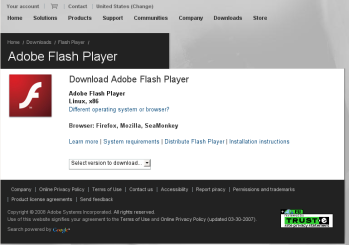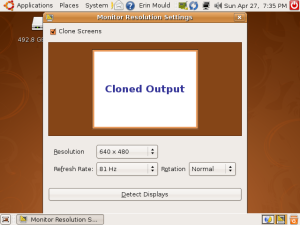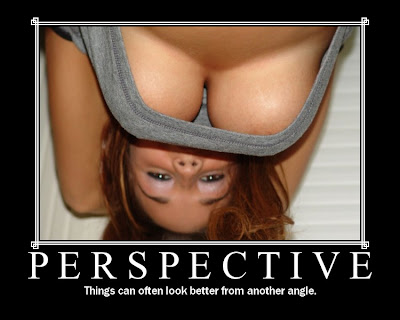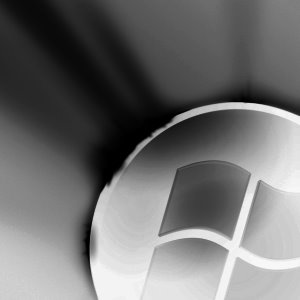Written by Content Consumer
Is Ubuntu usable enough for a non-tech-savvy girlfriend yet?
Introduction
I’ve toyed with Linux since 2002, when I first installed Mandrake. With the latest release of Ubuntu, I was interested to see how far Linux had come since then in terms of being used easily by the mainstream. So, I tricked my grudging girlfriend Erin into sitting down at a brand new Ubuntu 8.04 installation and performing some basic tasks. It’s surprising how many seemingly simple things become complicated and even out of reach for someone without a knowledge of Linux. There are a lot of little things that could be done to make the experience a lot more friendly for non-computer-literate people – some of them easy to implement, others not at all. I’ve toyed with Linux since 2002, when I first installed Mandrake. With the latest release of Ubuntu, I was interested to see how far Linux had come since then in terms of being used easily by the mainstream. So, I tricked my grudging girlfriend Erin into sitting down at a brand new Ubuntu 8.04 installation and performing some basic tasks. It’s surprising how many seemingly simple things become complicated and even out of reach for someone without a knowledge of Linux. There are a lot of little things that could be done to make the experience a lot more friendly for non-computer-literate people – some of them easy to implement, others not at all.

Erin’s knowledge of computers is limited to word processors, spreadsheets, Photoshop and a reasonable amount of browsing on the Web. Fairly standard stuff for a university philosophy student. All I did to the system (before leaving Erin at the log-in screen) was to install it and create a user account for her. She had no problems logging in, and loved the stylised heron background. Then I gave her one by one the tasks I’d set her. I didn’t give her any help at all. Erin’s knowledge of computers is limited to word processors, spreadsheets, Photoshop and a reasonable amount of browsing on the Web. Fairly standard stuff for a university philosophy student. All I did to the system (before leaving Erin at the log-in screen ) Was to install it and create a user account for her. She had no problems logging in, and loved the stylised heron background. Then I gave her one by one the tasks I’d set her. I didn’t give her any help at all.
First task: Tell me what the capital of Bosnia is. First task: Tell me what the capital of Bosnia is.
As soon as she heard this, Erin grinned, rolled her eyes and said “easy!” Her eyes found the Firefox shortcut at the top of the screen, and very soon Wikipedia told her Sarajevo. A good start, the task was completed with absolutely no trouble at all. As soon as she heard this, Erin grinned, rolled her eyes and said “easy!” Her eyes found the Firefox shortcut at the top of the screen, and very soon Wikipedia told her Sarajevo. A good start, the task was completed with absolutely no trouble at all.
Second task: Watch a video on YouTube. Second task: Watch a video on YouTube.
(note: this is a problem specifically with YouTube – it detects whether or not you have Flash using JavaScript and then puts a link to Adobe’s webpage instead of displaying the plugin. Firefox’s standard behaviour is to ask you to install it in an automated fashion. Just bad luck I happened to choose YouTube!) (note: this is a problem specifically with YouTube – it detects whether or not you have Flash using JavaScript and then puts a link to Adobe’s webpage instead of displaying the plugin. Firefox’s standard behaviour is to ask you to install it in an automated fashion. Just bad luck I happened to choose YouTube!)
This proved more problematic. Erin went to YouTube and searched for a Beatles video, and seemed to assume that it would work straight away. When it told her that she needed a plug-in she groaned, but clicked the link they gave her. It took her to the official Flash plug-in page, and gave her the option of downloading a gzipped tarball, an RPM or a YUM. This proved more problematic. Erin went to YouTube and searched for a Beatles video, and seemed to assume that it would work straight away. When it told her that she needed a plug-in she groaned, but clicked the link they gave her. It took her to the official Flash plug-in page, and gave her the option of downloading a gzipped tarball, an RPM or a YUM.

Because she’s using Ubuntu, the RPM and the YUM are going to be of no use – not that she knows this. Erin tried the .tar.gz, and it downloaded to her home folder. It opened in the archive manager, and she extracted it to the default. Then, she was lost. She tried double-clicking the file, and Ubuntu just asked her what she’d like to do with it. The option “run” results in it crashing. No clue was given to her that she should open up a terminal and type ‘./flashplayer-installer’. To be fair, there are links to installation instructions, but the average person acclimatised to Windows is not expecting to have to read complex information before installing a program – all they need to do is double click it. Obviously her attempts with the RPM and the YUM went nowhere. Frustrated, Erin conceded defeat. Because she’s using Ubuntu, the RPM and the YUM are going to be of no use – not that she knows this. Erin tried the. Tar.gz, and it downloaded to her home folder. It opened in the archive manager, and she extracted it to the default. Then, she was lost. She tried double-clicking the file, and Ubuntu just asked her what she’d like to do with it. The option “run” results in it crashing. No clue was given to her that she should open up a terminal and type ‘. / flashplayer-installer’. To be fair, there are links to installation instructions, but the average person acclimatised to Windows is not expecting to have to read complex information before installing a program — All they need to do is double click it. Obviously her attempts with the RPM and the YUM went nowhere. Frustrated, Erin conceded defeat.

There are other ways to install flash on Ubuntu, such as by using the inbuilt package manager. Why doesn’t Firefox tell her to do this, or do it automatically like Rhythmbox does with codecs? Ubuntu ship Firefox with their own special modifications, couldn’t this be one of them? There are other ways to install flash on Ubuntu, such as by using the inbuilt package manager. Why doesn’t Firefox tell her to do this, or do it automatically like Rhythmbox does with codecs? Ubuntu ship Firefox with their own special modifications, couldn ‘T this be one of them?
Third task: Download a Spice Girls Album Third task: Download a Spice Girls Album
Erin’s first reaction was to go to the Applications menu, and look first in the Sound & Video folder, and then in Internet. I presumed that she was looking for some kind of Limewire equivalent. Erin has downloaded music using uTorrent before in Windows, so she went and got utorrent.exe from their website. It downloaded, and she double clicked it. It asked her if she wanted to open it with an application, and, confused, she tried to open the executable with itself. Erin’s first reaction was to go to the Applications menu, and look first in the Sound & Video folder, and then in Internet. I presumed that she was looking for some kind of Limewire equivalent. Erin has downloaded music using uTorrent before in Windows , So she went and got utorrent.exe from their website. It downloaded, and she double clicked it. It asked her if she wanted to open it with an application, and, confused, she tried to open the executable with itself.
When this didn’t work, she sat frowning for a while before heading to ScrapeTorrent (where I’d shown her to get torrents months and months ago.) She downloaded a Spice Girls torrent and it asked her if she wanted to open it with “Transmission”. She hesitated, then clicked yes. It started downloading immediately to her Desktop. She sat back, folded her arms and gave me a self-satisfied smirk. When this didn’t work, she sat frowning for a while before heading to ScrapeTorrent (where I’d shown her to get torrents months and months ago.) She downloaded a Spice Girls torrent and it asked her if she wanted to open it with “Transmission”. She hesitated, then clicked yes. It started downloading immediately to her Desktop. She sat back, folded her arms and gave me a self-satisfied smirk.

The only problem I see here is the name of Transmission in the menu. I imagine that her problems would’ve been reduced if only they listed “Transmission BitTorrent Client” instead. How on earth is a user supposed to know what Transmission is? The icon certainly doesn’t help. They do this with “Firefox Web Browser”, so why not Transmission? Weird. They could even just put “file-sharing client”, and when it loads up for the first time a wizard can help the user understand what BitTorrent is and how it works. The only problem I see here is the name of Transmission in the menu. I imagine that her problems would’ve been reduced if only they listed “Transmission BitTorrent Client” instead. How on earth is a user supposed to know what Transmission is? The icon certainly doesn’t help. They do this with “Firefox Web Browser”, so why not Transmission? Weird. They could even just put “file-sharing client”, and when it loads up for the first time a wizard can help the user understand what BitTorrent is and how it works.
Fourth task: Draw me a little picture and save it in three formats. Fourth task: Draw me a little picture and save it in three formats.
Erin’s done a fair bit of photoshopping before, and from her attitude I could tell she thought it’d be easy. She went to the Graphics menu in Applications and selected “OpenOffice.org Drawing”, which makes sense for anyone uninitiated. However, I think she was expecting a simple Paint-esque program. Instead, she had opened an unfamiliar vector-based illustrator. It took her a long time just to find the buttons to make a line, or change colours. Eventually she made the picture and saved it as three formats. Because she went to “Save As…” instead of “Export…” she could only save it in strange and unfamiliar formats such as odg, otg, sxg. I could tell that she was perplexed as to why she couldn’t just save it in the formats she was used to. Erin’s done a fair bit of photoshopping before, and from her attitude I could tell she thought it’d be easy. She went to the Graphics menu in Applications and selected “OpenOffice.org Drawing”, which makes sense for anyone uninitiated. However, I think she was expecting a simple Paint-esque program. Instead, she had opened an unfamiliar vector-based illustrator. It took her a long time just to find the buttons to make a line, or change colours. Eventually she made the picture and saved it as three formats. Because she went to “Save As…” instead of “Export…” she could only save it in strange and unfamiliar formats such as odg, otg, sxg. I could tell that she was perplexed as to why she couldn’t just save it in the formats she was used to.
Obviously not having experience with a vector-based illustrator was Erin’s downfall in this task – but, then, how many people have used one? I don’t understand why there isn’ta program like KDE’s KPaint for Gnome/Ubuntu. (Also, why is OpenOffice.org Drawing installed in the Base package? Seems pretty unnecessary – if only because I don’t know anyone who uses a program like it.) Obviously not having experience with a vector-based illustrator was Erin’s downfall in this task – but, then, how many people have used one? I don’t understand why there isn’ta program like KDE’s KPaint for Gnome / Ubuntu . (Also, why is OpenOffice.org Drawing installed in the Base package? Seems pretty unnecessary – if only because I don’t know anyone who uses a program like it.)
Fifth Task: Burn an album from my music collection. Fifth Task: Burn an album from my music collection.
Erin knows that my music collection is on the same computer that she is using, in Windows. Before trying to find it, though, she looked for a CD burning program in the Sound & Video menu and found it with “Brasero Disc Burning”. Thankfully it wasn’t just called Brasero. I was impressed with the way it opened straight up to a screen with four big buttons, each with the common tasks anyone would want to do. Erin had no problems working out which button to push, and then it asked her which files to add. Erin knows that my music collection is on the same computer that she is using, in Windows. Before trying to find it, though, she looked for a CD burning program in the Sound & Video menu and found it with “Brasero Disc Burning”. Thankfully it wasn’t just called Brasero. I was impressed with the way it opened straight up to a screen with four big buttons, each with the common tasks anyone would want to do. Erin had no problems working out which button to push, and then it asked her which files to add.

Erin looked in her Music folder (created by default in Ubuntu), and her home folder and the desktop. She avoided the “492.8GB Media”, which is my Windows partition, and the many strange and unhelpfully-named folders in “Filesystem” could only have scared her. She minimised Brasero and went to the “Places” menu for the first time, launching the search program. She tried searching for music in her home directory and music folder, but found nothing, and didn’t try “Filesystem” or “492.8GB Media”. She also told me later that she thought it was stupid that you couldn’t specify which type of file you want to find. Nevertheless, she was unable to burn an album from my music collection. Erin looked in her Music folder (created by default in Ubuntu), and her home folder and the desktop. She avoided the “492.8GB Media”, which is my Windows partition, and the many strange and unhelpfully-named folders in “Filesystem” could only have scared her. She minimised Brasero and went to the “Places” menu for the first time, launching the search program. She tried searching for music in her home directory and music folder, but found nothing, and didn’t try ” Filesystem “or” 492.8GB Media “. She also told me later that she thought it was stupid that you couldn’t specify which type of file you want to find. Nevertheless, she was unable to burn an album from my music collection.

No problems with Brasero, their team did well for making it so user-friendly. However, Ubuntu really should be make more clear where the computer’s other partitions are. It should detect if there are Windows installations on the machine and provide well-named shortcuts to them. If this had been done, there wouldn’t’ve been any trouble. Also, the search function should, instead of “Filesystem”, have a “Whole Computer” option. How is someone not experienced with Linux supposed to know that folders like “etc”, “dev” and “mnt” contain all the workings and files on the machine? No problems with Brasero, their team did well for making it so user-friendly. However, Ubuntu really should be make more clear where the computer’s other partitions are. It should detect if there are Windows installations on the machine and provide well – named shortcuts to them. If this had been done, there wouldn’t’ve been any trouble. Also, the search function should, instead of “Filesystem”, have a “Whole Computer” option. How is someone not experienced with Linux supposed to know that folders like “etc”, “dev” and “mnt” contain all the workings and files on the machine?
Sixth Task: Change the speed of the mouse Sixth Task: Change the speed of the mouse
No issues here, Erin found “System ? Preferences ? Mouse” within a few seconds and the slider bar was right there. Easy. No issues here, Erin found “System ? Preferences ? Mouse” within a few seconds and the slider bar was right there. Easy.
Seventh Task: Change the theme of the computer. Seventh Task: Change the theme of the computer.
Again, very simple. Though she moved down to the Ts to find “Theme” first, she saw “Appearance” soon after and changed the theme to Mist. Couldn’t be simpler. Again, very simple. Though she moved down to the Ts to find “Theme” first, she saw “Appearance” soon after and changed the theme to Mist. Couldn’t be simpler.
Eighth Task: Find a picture on the Intenet and set it as the desktop background Eighth Task: Find a picture on the Intenet and set it as the desktop background
Went straight away to a website with background images, and grabbed one. Instead of just clicking the “Set as Desktop Background” option in the right-click menu, she saved the image to her home folder and then changed the background from the Appearance menu she’d found earlier. No problems. Went straight away to a website with background images, and grabbed one. Instead of just clicking the “Set as Desktop Background” option in the right-click menu, she saved the image to her home folder and then changed the background from the Appearance menu she’d found earlier. No problems.
Ninth Task: Change screen resolution. Ninth Task: Change screen resolution.
This was easy from the Preferences menu under Screen Resolution, and she changed it to the smallest size available: 720×400. However, she clicked “Keep settings” straight away, and couldn’t work out how to get it back because the screen was too small to display the entire height of the Screen Resolution menu. Eventually I had to do it for her by tabbing through the options. This was easy from the Preferences menu under Screen Resolution, and she changed it to the smallest size available: 720 × 400. However, she clicked “Keep settings” straight away, and couldn’t work out how to get it back because the screen was too small to display the entire height of the Screen Resolution menu. Eventually I had to do it for her by tabbing through the options.

This is pretty ridiculous – you can’t make it shorter and you can’t move it up past the top of the screen. There’s no way I can see of being able to change the resolution using that menu when you’re on a small resoltion – without tabbing to invisible options that you don’t know are there. Maybe I’m just missing something, I’d be happy to be enlightened. This is pretty ridiculous – you can’t make it shorter and you can’t move it up past the top of the screen. There’s no way I can see of being able to change the resolution using that menu when you’re on a small resoltion – without tabbing to invisible options that you don’t know are there. Maybe I’m just missing something, I’d be happy to be enlightened.
Tenth Task: Photoshop a picture of her face onto my body Tenth Task: Photoshop a picture of her face onto my body
She opened Firefox, went to Facebook and found pictures of her and me. So far so good. Then, she opened up GIMP (which had “Image Editor” after it in the menu). Her multiple attempts to maximise each of the purposefully small windows showed that she was confused with the change from Photoshop’s one main window to GIMP’s scattered one. After she worked out what was going on, she just copied and pasted the images straight from Facebook. From there, it was easy, because GIMP has the same icons and functionality as photoshop does for cutting out and pasting parts of a photo. I had to stop her when she started finding out how to match our skin tones: “How can I make my skin colour more like yours, all pasty and yellow?” She opened Firefox, went to Facebook and found pictures of her and me. So far so good. Then, she opened up GIMP (which had “Image Editor” after it in the menu). Her multiple attempts to maximise each of the purposefully small windows showed that she was confused with the change from Photoshop’s one main window to GIMP’s scattered one. After she worked out what was going on, she just copied and pasted the images straight from Facebook. From there, it was easy, because GIMP has the same icons and functionality as photoshop does for cutting out and pasting parts of a photo. I had to stop her when she started finding out how to match our skin tones: “How can I make my skin colour more like yours, all pasty and yellow? “

I don’t understand why GIMP doesn’t just layout its windows like photoshop does. It wouldn’t lose usability, surely, and it would help the transition of first-time-users immensely. I don’t understand why GIMP doesn’t just layout its windows like photoshop does. It wouldn’t lose usability, surely, and it would help the transition of first-time-users immensely.
Eleventh Task: Log onto MSN Eleventh Task: Log onto MSN
She went straight to the Internet category of Applications, but was uncertain about “Pidgin Instant Messenger”. She asked “Does it have to be MSN?”. I said, “not really”, and so she opened up Pidgin. It asked her to add an account, and gave her a drop-down box of IM protocols along with inputs for “Screen name” and “Local alias”. She went straight to the Internet category of Applications, but was uncertain about “Pidgin Instant Messenger”. She asked “Does it have to be MSN?”. I said, “not really”, and so she opened up Pidgin. It asked her to add an account, and gave her a drop-down box of IM protocols along with inputs for “Screen name” and “Local alias”.

Because Erin’s only experience with IM clients has been the official MSN ones, she didn’t understand what a multi-protocol one could do. She thought that “adding” an account was creating a new one on the network. Also, she understandably didn’t know what “AIM” was, which is what the protocol menu defaulted to. Moreover, MSN doesn’t use the term “screen name”, so she obviously wouldn’t associate it with her normal login. Because Erin’s only experience with IM clients has been the official MSN ones, she didn’t understand what a multi-protocol one could do. She thought that “adding” an account was creating a new one on the network. Also, she understandably didn’t know what “AIM” was, which is what the protocol menu defaulted to. Moreover, MSN doesn’t use the term “screen name”, so she obviously wouldn’t associate it with her normal login.
So, she tried to sign-on using a made up username and password, and obviously it failed. She then went back to the add screen and found the MSN protocol. However, she put her login under local alias instead of screen name, but she fixed this the second time around after it didn’t work. Then she was online, able to tell her friends about how much she hated Linux. So, she tried to sign-on using a made up username and password, and obviously it failed. She then went back to the add screen and found the MSN protocol. However, she put her login under local alias instead of screen name, but she fixed this the second time around after it didn’t work. Then she was online, able to tell her friends about how much she hated Linux.
The problems Erin had could easily be solved by some sort of first-time welcome screen that explained what Pidgin is, what it does, and asking if she’d like to add and log into existing MSN, etc. accounts. Perhaps changing “screen name” to something more appropriate based on which protocol is selected would be helpful. Also, why does local alias seem like a necessary piece of information required to create an account? Seems like it confuses more than aids a new user. The problems Erin had could easily be solved by some sort of first-time welcome screen that explained what Pidgin is, what it does, and asking if she’d like to add and log into existing MSN, etc. Accounts. Perhaps changing “screen name “to something more appropriate based on which protocol is selected would be helpful. Also, why does local alias seem like a necessary piece of information required to create an account? Seems like it confuses more than aids a new user.
When Erin tried to quit Pidgin, she pressed the X in the top right, and it went to the notification area. When I told Erin that she hadn’t quit it properly, she tried to quit it by clicking in the lower-left hand side of the screen, where she’d usually find her MSN icon in Windows. She just changed desktops, of course, but eventually she found it in the top-right. When you first close Pidgin it should tell you that you haven’t really quit it and that it’s just going to the notification area and what it will look like. When Erin tried to quit Pidgin, she pressed the X in the top right, and it went to the notification area. When I told Erin that she hadn’t quit it properly, she tried to quit it by clicking in the lower-left hand side of the screen, where she’d usually find her MSN icon in Windows. She just changed desktops, of course, but eventually she found it in the top-right. When you first close Pidgin it should tell you that you haven’t really quit it and that it’s just going to the notification area and what it will look like.
Twelfth Task: Install Skype Twelfth Task: Install Skype
Erin went straight away to skype.com. I think she was wary after her experience with Flash, but Skype have a great download page for Linux, where it lists different packages for the more popular distros. Ubuntu was at the top, and Erin saved the .deb file to the default location. When it was done, it opened with the Package Install and there was a big button saying “Install”. She clicked it, and it installed. Perfect. Erin went straight away to skype.com. I think she was wary after her experience with Flash, but Skype have a great download page for Linux, where it lists different packages for the more popular distros. Ubuntu was at the top, and Erin saved the. deb file to the default location. When it was done, it opened with the Package Install and there was a big button saying “Install”. She clicked it, and it installed. Perfect.
The only problem was, she didn’t know where it went. She looked in her home folder, the desktop and the menus up the top. For some weird reason she didn’t look in “Internet”, where it had popped up. Regardless, after a package is installed, if it’s available in the menu it should say where it is. Or, copy Windows’ “new programs have been installed” bubble that comes out of the Start Menu. Either thing would’ve solved this problem. The only problem was, she didn’t know where it went. She looked in her home folder, the desktop and the menus up the top. For some weird reason she didn’t look in “Internet”, where it had popped up. Regardless, after a package is installed, if it’s available in the menu it should say where it is. Or, copy Windows’ “new programs have been installed” bubble that comes out of the Start Menu. Either thing would’ve solved this problem.
Conclusion Conclusion
The main issue with the desktop experience is that the geeky programmers and designers assume too much from the average user. They assume the user knows about the way in which programs are installed, or how the file system is set out. The average user will not go out of their way to google for help or even read the associated documentation that comes with Ubuntu and its default software. The little information pop-ups and guided wizards are critical to explaining how the user can accomplish the basic tasks they most probably are trying to do. The main issue with the desktop experience is that the geeky programmers and designers assume too much from the average user. They assume the user knows about the way in which programs are installed, or how the file system is set out. The average user will not go out of their way to google for help or even read the associated documentation that comes with Ubuntu and its default software. The little information pop-ups and guided wizards are critical to explaining how the user can accomplish the basic tasks they most probably are trying to do.
I’d love to see a welcome screen for the first time you open up your desktop, with little videos explaining a few key concepts to how Linux and Ubuntu work. Maybe it could ask “What do you want to do?” and then explain how they could do this. I’d love to see a welcome screen for the first time you open up your desktop, with little videos explaining a few key concepts to how Linux and Ubuntu work. Maybe it could ask “What do you want to do?” And then explain how they could do this.
Linux won’t truly be ready for the desktop until someone computer illiterate can sit down at a the computer and with little effort do what they want to do. Erin’s intelligent, quick to learn and is reasonably well-acquainted with modern technology. If she had as much trouble as she did, what chance to the elderly or at least the middle-aged stand? Linux won’t truly be ready for the desktop until someone computer illiterate can sit down at a the computer and with little effort do what they want to do. Erin’s intelligent, quick to learn and is reasonably well-acquainted with modern technology. If she had as much trouble as she did, what chance to the elderly or at least the middle-aged stand?


































![Mind-Blowing Photos - FlickrMeeting - Genova - G3 - [Ghe semmu + DieciCento + Milanoue!!W ]](http://88.198.60.17/images/pictures-photos/photos-12.jpg)

















































































 For some odd reason, young boys love cracking their knuckles. Whether it’s the sound of the crack or the feeling it makes, we feel relieved when one cracks a knuckle. After getting all that finger stress out, Mom smacked you upside the head, reminding you of the extreme arthritis you’d get because of all that cracking.
For some odd reason, young boys love cracking their knuckles. Whether it’s the sound of the crack or the feeling it makes, we feel relieved when one cracks a knuckle. After getting all that finger stress out, Mom smacked you upside the head, reminding you of the extreme arthritis you’d get because of all that cracking. One of the most important times in a young man’s life is the first sight of facial hair growth. A teen can sometimes grow a beard in their early years while others try to catch up to their more-manly brethren. Mommy doesn’t want her little boy to grow up to quickly, and devised the reverse psychology technique of telling you that shaving would make your beard come back fuller. So you shaved constantly and mom had a boy for a little while longer.
One of the most important times in a young man’s life is the first sight of facial hair growth. A teen can sometimes grow a beard in their early years while others try to catch up to their more-manly brethren. Mommy doesn’t want her little boy to grow up to quickly, and devised the reverse psychology technique of telling you that shaving would make your beard come back fuller. So you shaved constantly and mom had a boy for a little while longer. The first things you did after school involved plopping your little butt down in front of the TV and catching some cartoons. G.I.Joe, Transformers, & My Little Pony- all of these wonderful programs kept us at bay for hours. We kept our eyes glued to the action – all at the risk of going blind, something mom loved to point out.
The first things you did after school involved plopping your little butt down in front of the TV and catching some cartoons. G.I.Joe, Transformers, & My Little Pony- all of these wonderful programs kept us at bay for hours. We kept our eyes glued to the action – all at the risk of going blind, something mom loved to point out. When was the last time you saw an adult who was happy that it was cold and snowing outside? The upside of cold weather included snowball fights, Christmas, and missing days from school. The downside? Catching a cold, supposedly. Mom always had us put on multiple layers of clothing. Was mom just being too over protective of her freezing young ones or just a little crazy?
When was the last time you saw an adult who was happy that it was cold and snowing outside? The upside of cold weather included snowball fights, Christmas, and missing days from school. The downside? Catching a cold, supposedly. Mom always had us put on multiple layers of clothing. Was mom just being too over protective of her freezing young ones or just a little crazy? Taking a bath was on the most hated list of things to do, right up there with cleaning your room and going to bed early. Mom knew this, as she spent years dragging you into the water and forcing that Johnson’s & Johnson’s baby shampoo all over your noggin. When it was time to wash ourselves, the “potato ears” were just frightening enough to keep them squeaky clean.
Taking a bath was on the most hated list of things to do, right up there with cleaning your room and going to bed early. Mom knew this, as she spent years dragging you into the water and forcing that Johnson’s & Johnson’s baby shampoo all over your noggin. When it was time to wash ourselves, the “potato ears” were just frightening enough to keep them squeaky clean. When it came time for us to be allowed to chew gum, mother only did so with the strict knowledge that swallowing that gum would hurt our little tummies for years to come. Then came the day when you simply forgot about the Juicy Juice that you were chomping down on one minute and before you know it, down the hatch it went.
When it came time for us to be allowed to chew gum, mother only did so with the strict knowledge that swallowing that gum would hurt our little tummies for years to come. Then came the day when you simply forgot about the Juicy Juice that you were chomping down on one minute and before you know it, down the hatch it went. When you are a kid, the notion of being grown up seems so cool, which just proves how innocence and stupidity go hand and hand. Every parent started their day off with a nice fresh cup of joe. As you wanted something that made you feel more grown up, mom was there to mention coffee would stunt your growth. Back to coco we went, because being short was like being a kid forever!
When you are a kid, the notion of being grown up seems so cool, which just proves how innocence and stupidity go hand and hand. Every parent started their day off with a nice fresh cup of joe. As you wanted something that made you feel more grown up, mom was there to mention coffee would stunt your growth. Back to coco we went, because being short was like being a kid forever! The white lies that mom threw at us were to make sure we stayed safe. Now carrots, on the other hand, were something that she encouraged us to eat – because, eating them would make our eyesight better. Already we had come to terms with going blind from sitting too close to the TV, so if there was a way to reverse its affects by eating carrots, then we were all over it.
The white lies that mom threw at us were to make sure we stayed safe. Now carrots, on the other hand, were something that she encouraged us to eat – because, eating them would make our eyesight better. Already we had come to terms with going blind from sitting too close to the TV, so if there was a way to reverse its affects by eating carrots, then we were all over it. Splashing around in the pool was all day affair. Once the hot dogs and hamburgers were gone, it was back to the pool for any unfinished water business. Then mom warned that if we jumped in the water too soon, it might be our last time. All of a sudden that pool of refreshing water turned into a pool of fire.
Splashing around in the pool was all day affair. Once the hot dogs and hamburgers were gone, it was back to the pool for any unfinished water business. Then mom warned that if we jumped in the water too soon, it might be our last time. All of a sudden that pool of refreshing water turned into a pool of fire. One if the earliest forms of making fun of your classmates was using your facial expressions. Flashing a tongue, crossing our eyes, pushing our nose up – all of these things either made some unsuspecting friend cry to mommy. That is, until mom caught on and let us know that those crazy faces could end up becoming permanent.
One if the earliest forms of making fun of your classmates was using your facial expressions. Flashing a tongue, crossing our eyes, pushing our nose up – all of these things either made some unsuspecting friend cry to mommy. That is, until mom caught on and let us know that those crazy faces could end up becoming permanent. Growing up, whatever resembled a lightsaber from Star Wars probably at some point got used as a weapon. Whether it was a toy, a broom handle, or even the cardboard from a roll of wrapping paper, Mom would always warn us about “poking someone’s eye out” which either scared us enough to stop or made us swing even harder.
Growing up, whatever resembled a lightsaber from Star Wars probably at some point got used as a weapon. Whether it was a toy, a broom handle, or even the cardboard from a roll of wrapping paper, Mom would always warn us about “poking someone’s eye out” which either scared us enough to stop or made us swing even harder. Teenage boys tend to enjoy spicier foods. You have young men everywhere seeking out the spiciest things around in the hopes that they can brave the heat to sit at the table with the “big boys” like Dad and Uncle Ron. “Bring on the wings, the salsa, the jalapeno”, you say. And mom chimes back with, ” and “don’t forget the ulcers!”
Teenage boys tend to enjoy spicier foods. You have young men everywhere seeking out the spiciest things around in the hopes that they can brave the heat to sit at the table with the “big boys” like Dad and Uncle Ron. “Bring on the wings, the salsa, the jalapeno”, you say. And mom chimes back with, ” and “don’t forget the ulcers!” Thanks to all the comic books that were read as a child, it’s no shocker that many a young gal or lad were caught climbing trees like Spiderman. Mom of course shouted for you to come down before you “cracked your head open”. The mere thought of your head spilling out its insides like Humpty Dumpty sealed the deal.
Thanks to all the comic books that were read as a child, it’s no shocker that many a young gal or lad were caught climbing trees like Spiderman. Mom of course shouted for you to come down before you “cracked your head open”. The mere thought of your head spilling out its insides like Humpty Dumpty sealed the deal.
 Executives: John and Forrest Mars, the owners of Mars Inc., makers of M&M’s
Executives: John and Forrest Mars, the owners of Mars Inc., makers of M&M’s Executives: Executives of 20th Century Fox’s TV division (pre-Murdoch)
Executives: Executives of 20th Century Fox’s TV division (pre-Murdoch)
 Executive: Robert Uihlein, Jr., head of the Schlitz Brewing Company in Milwaukee, Wisconsin.
Executive: Robert Uihlein, Jr., head of the Schlitz Brewing Company in Milwaukee, Wisconsin.


 IBM once hired Microsoft founder Bill Gates to come up with the operating software for a new computer that IBM was rushing to market … and Gates turned to a company called Digital Research. He set up a meeting between owner Gary Kildall and IBM … but Kildall couldn’t make the meeting and sent his wife, Dorothy McEwen, instead. McEwen, who handled contract negotiations for Digital Research, felt that the contract IBM was offering would allow the company to incorporate features from Digital’s software into its own proprietary software – which would then compete against Digital. So she turned the contract down. Bill Gates went elsewhere, eventually coming up with a program called DOS, the software that put Microsoft on the map.
IBM once hired Microsoft founder Bill Gates to come up with the operating software for a new computer that IBM was rushing to market … and Gates turned to a company called Digital Research. He set up a meeting between owner Gary Kildall and IBM … but Kildall couldn’t make the meeting and sent his wife, Dorothy McEwen, instead. McEwen, who handled contract negotiations for Digital Research, felt that the contract IBM was offering would allow the company to incorporate features from Digital’s software into its own proprietary software – which would then compete against Digital. So she turned the contract down. Bill Gates went elsewhere, eventually coming up with a program called DOS, the software that put Microsoft on the map. Are you using Windows Vista? Then you might as well know that the licensed operating system installed on your machine is harvesting a healthy volume of information for Microsoft. In this context, a program such as the Windows Genuine Advantage is the last of your concerns. In fact, in excess of 20 Windows Vista features and services are hard at work collecting and transmitting your personal data to the Redmond company.
Are you using Windows Vista? Then you might as well know that the licensed operating system installed on your machine is harvesting a healthy volume of information for Microsoft. In this context, a program such as the Windows Genuine Advantage is the last of your concerns. In fact, in excess of 20 Windows Vista features and services are hard at work collecting and transmitting your personal data to the Redmond company.